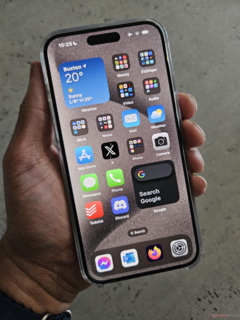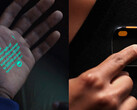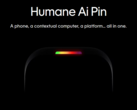Apple is the number one smartphone vendor in the world by market share, while its iPhones dominate the list of the ten most sold models of smartphones. Since the iPhone launched in 2007, it has set the benchmark and model for how a contemporary smartphone should look and function. Combined with the Apple App Store and services model, there is currently no more compelling alternative on the market.
However, the app-centric, and touch-centric mobile computing paradigm could be under threat for the first time with the rise of generative AI. Powered by large language models, there is a new breed of smartphones on the horizon that threatens to turn the “There’s an app for that” paradigm into an entirely new paradigm where “There’s no need for an app for that.” The first of these new AI-centric smartphone concepts was unveiled at Mobile World Congress 2024 this past week by T-Mobile parent company Deutsche-Telekom.
Deutsche Telekom’s Chief Product & Digital Officer, Jon Abrahamson explains their vision:
Artificial intelligence and Large Language Models (LLM) will soon be an integral part of mobile devices. We will use them to improve and simplify the lives of our customers. Our vision is a magenta concierge for an app-free smartphone. A real everyday companion that fulfills needs and simplifies digital life.
Deutsche Telekom has partnered with generative AI pioneer, Brain AI, to incorporate its Natural AI interface (video embedded below) into a T Phone, that centers on a voice-controlled AI interface with traditional smartphone apps pushed to the periphery. If the concept sounds familiar, that is because Deutsche Telekom is taking what we have already seen from Humane with its Ai Pin device and a similar device called the Rabbit R1 and packaging it into a smartphone form factor with a traditional touchscreen interface.
The Humane Ai Pin ditches a display to help users remain immersed in the real world around them as a potential smartphone replacement, while the Rabbit R1 is pitched as more of an AI companion to a traditional smartphone. Neither, of course, are app-centric and instead rely on LLM AI models to help users get things done by connecting to the various services they normally use, but online, rather than through a traditional app interface. Importantly, consumer interest in these devices is high. The Humane Ai Pin is about to reach US customers in April with a new deal inked to distribute the wearable device in Japan, while Rabbit is exceeding all its own expectations with sales of its R1.
Of course, Deutsche Telekom is not the only company interested in turning the app-centric smartphone experience upside down. Former Apple chief design officer Jony Ive is reported to have teamed up with OpenAI’s CEO Sam Altman to create an AI-Phone. This is undoubtedly a significant development, although we haven’t heard anything yet about when we might be likely to see the device or exactly the type of approach it might take. However, the approach that Deutsche Telekom and Brain AI are taking seems a likely direction for the Altman/Ive project.
Since leaving Apple, Jony Ive has established his own design company Love From with his collaborator, Australian-born designer Marc Newson. Ive is also said to have attracted at least 20 former Apple product designers to join him at Love From, creating what is very likely a formidable team. Coupled with the backing of OpenAI, the leading player in the generative AI field, there can be little doubt that the AI-Phone project will make a splash when it eventually surfaces.
While Apple appears to have been caught flat-footed with the rise of generative AI, it is not a stranger to AI more generally, however. It has been using machine learning AI-based models in its iPhones for several years now, but centered largely around Siri (which has lagged the competition for many years now) and in the computational photography algorithms it applies to its iPhone imaging processing and elsewhere. But instead of going hard at AI, it has been focused on other gambles like the recently launched Vision Pro, which has met with mixed reviews, and the multibillion dollar decade-long Apple Car project which is now terminated.
With the death of the Apple Car project, Apple is now said to be all-in on developing AI technologies and integrating them into its existing products like the iPhone. In fact, iOS 18 due to arrive for consumers in September is being touted as a substantial upgrade that will bring what some will see as being overdue generative AI features to the iPhone, along with a substantially upgraded language model upgrade for Siri.
This is in stark contrast to Google who has been focused on bringing overt AI-based features to its Pixel smartphones steadily over the past 8 years, including a number of generative AI features that debuted with the Pixel 8 Pro last year. Samsung is the latest to get onboard with generative AI features with the recent launch of its Galaxy S24 series. However, like Apple, even with the new generative AI features, the traditional smartphone paradigm still reigns. Given the billions of dollars in revenue that this approach rakes in, it is hard to see Apple moving to shift from this model anytime soon.
It’s certainly an interesting juncture in the evolution of the smartphone paradigm that Steve Jobs introduced with the launch of the iPhone in 2007. It is a paradigm that we have seen dominate mobile technology for the past 17 years since, but it could be under serious threat for the first time. It is certainly feasible that we will see consumers embrace an AI-centric approach to smartphones where many tasks that we currently use to get things done on our phones can be completed with a voice-command in conjunction with LLM AI models.
There is no question that generative AI models can already create results that are quite astonishing. It makes it feasible that web browsing for information could fade away quite quickly. AI models could be used for automatically editing photos and videos shot by users or be edited in specific ways according to users verbal instructions without the need to use apps at all. Email and messages can be read and responded to. Bookings for travel and accommodation can all be executed by voice using the power of AI. A new generative AI model from Google DeepMind emerged this week that can even create 2D gaming platformers. One can quite easily foresee a world where many, if not all, of these traditionally app-centric functions are absorbed by an LLM-based AI-centric operating system.
If this was to occur, Apple could quite quickly find itself trying to defend its current smartphone app-centric smartphone paradigm while the market shifts to a radically different AI-centric smartphone model. How long will it be willing to try hang on to its iPhone and App Store cash cow? How quickly will it be able to pivot? Or are consumers to deeply ingrained in the app-centric smartphone model that Apple will be able to just continue to incrementally build on the foundation it has laid over the past 17 years for the foreseeable future?
Source(s)
Own
















